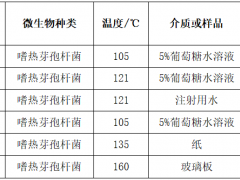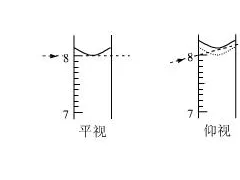Paul Ehrlich
Also known as: Paul Ralph Ehrlich
Born: March 14, 1854 in Strehlen, Upper Silesia, Germany
Died: August 20, 1915 in Bad Homburg, Hesse, Germany
Occupation: scientist, bacteriologist
Source Database: Encyclopedia of World Biography
BIOGRAPHICAL ESSAY
The German bacteriologist Paul Ehrlich (1854-1915) advanced the science and practice of medicine by applying the fast-growing achievements of organic chemistry to the problems of disease. He is known for his discovery of Salvarsan.
Paul Ehrlich was born on March 14, 1854, at Strehlen, Upper Silesia. While still at school he took a great interest in chemical experiments and even got the local druggist to compound throat lozenges according to his original prescription.
Preparatory Work
At first Ehrlich attended Breslau University but found it dull and uninteresting because it lacked biology and organic chemistry, his favorite subjects. Accordingly, he passed on to the new University of Strasbourg, where he
experimented with histological staining, but he returned to Breslau in his third term. In 1878 he graduated in medicine at Leipzig. His thesis was a contribution on the theory and practice of histological staining--the conception of the processes in their chemical, technological, and histological aspects--in which his idea of a chemical binding of heterogeneous substances to protoplasm was first expressed. Already in 1876, he had discovered the "mast" cell by its basophilic granules.
Early in his student career Ehrlich started investigations which in spite of their apparent diversity converged on a common principle: the action of drugs as a manifestation of their specific affinity for particular constituents of cells. According to Ehrlich, substances which affect bodily functions do so by virtue of combining with particular components of the animal. In chemical idiom, certain atom groups (side chains) of the drug combine with receptor atom groups of the cellular protoplasm and lead to the action. This was his famous "side-chain theory."
Ehrlich spent several years in Egypt recovering from a severe case of phthisis. On his return to Germany, Robert Koch, from whom Ehrlich had received an understanding of the modern discipline of cellular pathology and also the relation of bacteriology to disease processes, offered him a place in his new Institute for Infectious Diseases. Here Ehrlich perfected methods of preparing and standardizing diphtheria antitoxin from horses. Meanwhile he was appointed director of the State Institute for Serum Research and Serum Control at Steglitz near Berlin. Work on tumors and immunological studies occupied the forefront of his research until about 1909. In 1908 Ehrlich received the Nobel Prize in medicine for his studies on immunity.
Science of Chemotherapy
The Speyer-Ellissen family of Frankfurt offered to endow a research institute for Ehrlich's work on chemotherapy. The institute, named George Speyer-Haus, was built, and in 1906 Ehrlich became director. The methods of chemotherapy, that is, treating infections with synthetic compounds antagonistic to pathogenic agents without seriously damaging the host, had arisen in 1891, when it was observed that methylene blue exercises a curative action on human malaria. Before the founding of the institute, Ehrlich had conducted work on an experimental scale with a small staff, and this resulted in a veritable miracle: the cure of a trypanosome infection that was invariably fatal in mice in 3-4 days. Cure followed one subcutaneous injection of a synthetic dye, trypan red, administered within 24 hours of the anticipated time of death. Other drugs were found to possess a degree of therapeutic effect, and certain organic arsenical compounds, "atoxyl" derivatives, also proved to be trypanocidal. From these the drug Salvar
Ehrlich's tremendous achievements were the outcome of a life of unremitting scientific preoccupation to which almost everything was sacrificed. The furor of Salvarsan made him one of the celebrities of his time, both in science and commerce. He died in Bad Homburg, Hesse, on Aug. 20, 1915.
-- Carl H. Browning
AWARDS
Nobel Prize for medicine or physiology, 1908.
FURTHER READINGS
? For Ehrlich's own writings see F. Himmelweit, ed., The Collected Papers of Paul Ehrlich (1956). Accounts of Ehrlich's life and work are Herman Goodman, Paul Ehrlich: A Man of Genius and an Inspiration to Humanitarians (1924), and Martha Marquardt, Paul Ehrlich (1951). A sketch of his life is in Theodore L. Sourkes, Nobel Prize Winners in Medicine and Physiology, 1901-1965 (1953; rev. ed. 1966).
什么是食品安全指标
近日,在与朋友们讨论标明执行推荐性标准的食品抽检不合格的处理时,有人提出应当适用《食品安全法实施条例》第七十四条,……(世界食品网-www.shijieshipin.com)
2023-06-25737
检测报告要求
1信息完整、一致:原始记录要具有原始性、可复现性、追溯性(特别是检测方法、规范),对检测条件有具体要求时应详细记录。有些信……(世界食品网-www.shijieshipin.com)
2023-06-25455
食品中常见的微生物汇总
假单胞菌属:革兰氏阴性、极生鞭毛、可运动、不生芽孢、杆状,新鲜食品中的优势菌,常存在于土壤和水中,广泛分布在食品中。另外……(世界食品网-www.shijieshipin.com)
2023-06-25821

- 什么是湿热灭菌中的D值、Z值、F0值?一文解析
0评论2023-06-25
实验室温湿度要求
在实验室的监控项目中,不同实验室对温湿度都有要求,大部分实验都是在明确的温湿度环境中展开。在医药、生化、仪器校准、……(世界食品网-www.shijieshipin.com)
2023-06-25850
样品管理员需要授权?
样品管理员要不要授权?1正方观点:不需要授权依据CNAS-CL01条款6.2.6 实验室应授权人员从事特定的实验室活动,包括但……(世界食品网-www.shijieshipin.com)
2023-06-25605
高压蒸汽灭菌锅使用标准操作程序
高压灭菌锅在日常使用和维护中有许多地方是需要重视的,这样才能更好的保证人员安全及设备的正常运行,今天小编就为您分享……(世界食品网-www.shijieshipin.com)
2023-06-25427
浅谈关于天平内放置干燥剂的问题
万分之一天平防尘罩里面到底要不要防干燥剂?天平生产厂家都不建议放?因为干燥剂的存在会引起罩内空气对流进而影响称量, 另外干……(世界食品网-www.shijieshipin.com)
2023-06-25417

- 量筒,你用对了吗?
0评论2023-06-25
超净工作台失火对策
1管理要求(1)超净工作台由专人管理,定期清洁过滤网。(2)使用人员应保持超净工作台的整洁卫生。(3)微生物实验与植物……(世界食品网-www.shijieshipin.com)
2023-06-25298